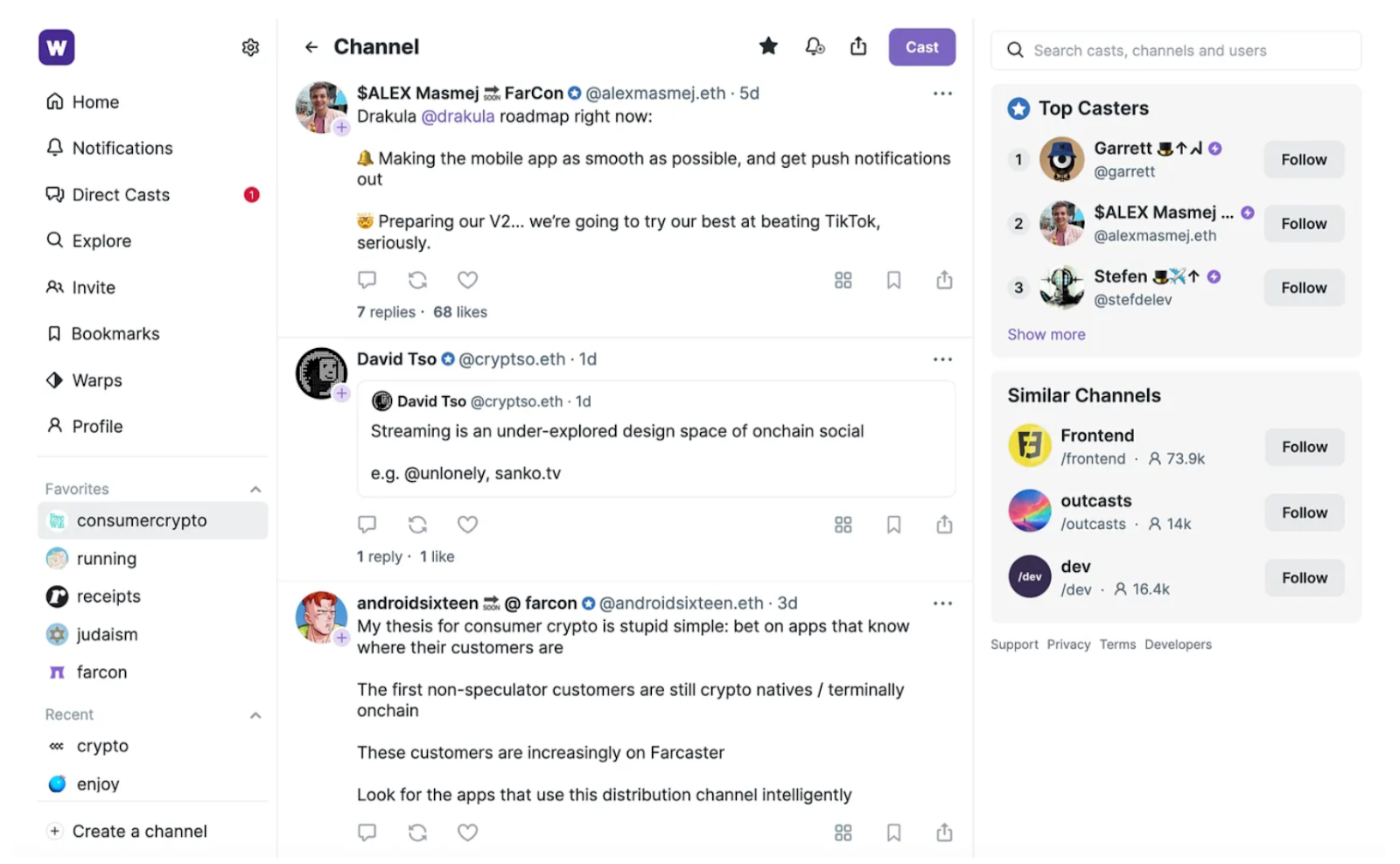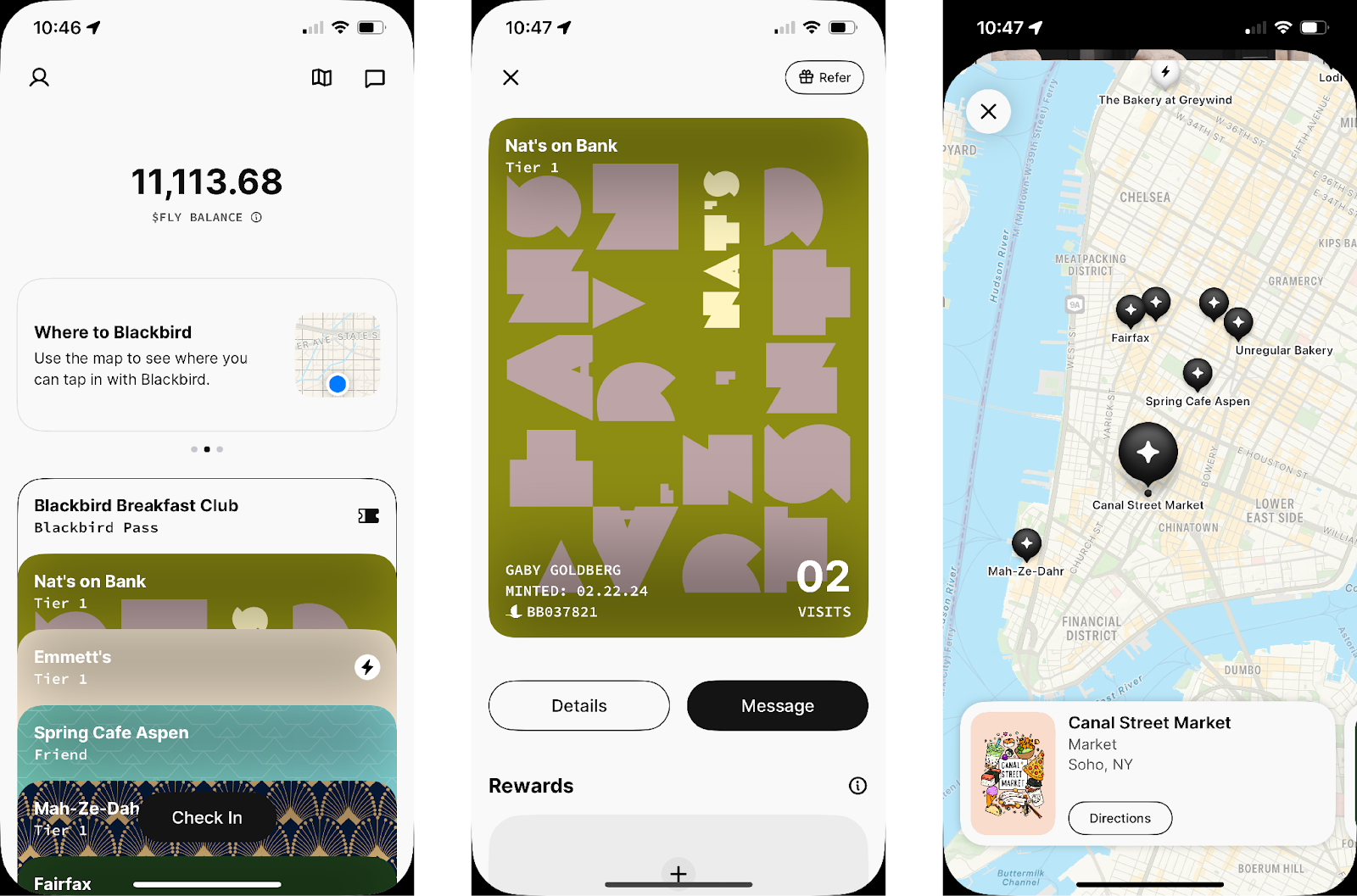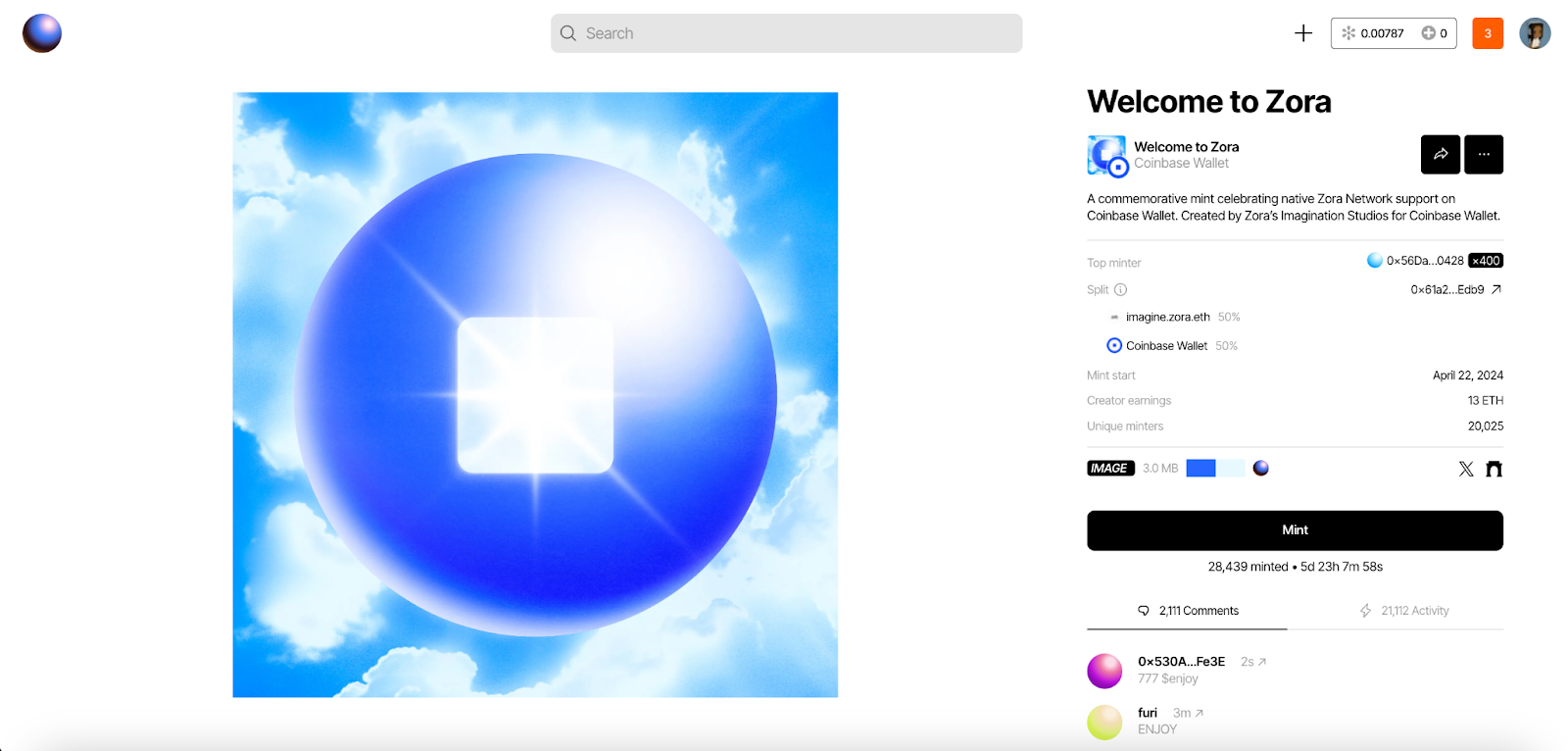- Aleph
- Anna Gat
- Ariel LeBeau
- Austin Robey
- David Blumenstein
- David Ehrlichman
- David Kerr
- Devon Moore
- Dexter Tortoriello
- Drew Coffman
- Drew Millard
- Eileen Isagon Skyers
- FWB Staff
- Gaby Goldberg
- Greg Bresnitz
- Greta Rainbow
- Ian Rogers
- Jessica Klein
- Jose Fernandez da Ponte
- Jose Mejia
- Kelani Nichole
- Kelsie Nabben
- Kevin Munger
- Khalila Douze
- Kinjal Shah
- Kyla Scanlon
- LUKSO
- Lindsay Howard
- Maelstrom
- Marc Moglen
- Marvin Lin
- Mary Carreon
- Matt Newberg
- Mike Pearl
- Mike Sunda (PUSH)
- Moyosore Briggs
- Nicole Froio
- Original Works
- Ruby Justice Thelot
- Ryne Saxe
- Simon Hudson
- Steph Alinsug
- The Blockchain Socialist
- Willa Köerner
- Yana Sosnovskaya
- Yancey Strickler
- iz

Tue Nov 19 2024
The financialization of everything is a powerful feature in crypto, but not enough people talk about the consumer applications that don’t require any crypto to get started. With structural complexities like seed phrases and token bridging abstracted away, these new kinds of crypto apps may not feel like “crypto apps” at all. These applications largely prioritize participation over profit, representing an emerging trend in how crypto-native developers are bringing products to mass market. It all starts with circumventing the first bottleneck that users typically encounter: the onramp. Crypto onramps are the bridge between traditional financial systems and digital assets, allowing users to convert fiat money into crypto.
The biggest point of friction for many crypto applications exists at the very beginning of the user journey, when users are expected to show up to the application with tokens already in their wallet. For crypto-native consumers, this may not be an issue — but a new consumer may not have a wallet at all, let alone the right tokens on the right network for a specific application. If that user needs a specific token to continue, they’d either need to swap or bridge their existing assets to the right token or network, or they’d need to onramp entirely, converting their fiat money into crypto, potentially for the first time. Not surprisingly, this results in a major dropoff point for consumer experiences targeting new-to-crypto users.

The idea of consumer crypto applications that “don’t feel like crypto” is far from a new concept, but it hasn’t felt truly feasible until recently. Over the last few years, blockchains have become faster and cheaper via new scaling solutions. Self-custody wallets have been made more user friendly by way of account abstraction, multi-party computation, and social recovery, which all help to eliminate the need for unwieldy seed phrases. ERC-4337 paymasters have made it possible for applications to sponsor gas fees on behalf of their users. And perhaps most recently, a new cohort of consumer applications have begun to set an example for how best to bring net new users into crypto: without the need for an onramp at all.
One of my favorite examples is Warpcast, a consumer application built on top of the Farcaster protocol. Farcaster is a “sufficiently decentralized” social network, employing a hybrid architecture to store identity onchain (e.g. creating an account) and data offchain (e.g. “casting” a message, following another user, reacting to a post, etc.). Aside from a nominal fee ($10) to cover account creation and storage, Warpcast is free to use. This is largely due to Farcaster’s architecture: since data is stored offchain, there are no gas fees associated with casting, liking, or commenting on Warpcaster or any other clients in the Farcaster ecosystem.

Blackbird, a decentralized hospitality platform, is another example of this. Upon account creation, a crypto wallet is created for each user. Anytime a user dines out at a Blackbird-affiliated restaurant, they earn $FLY (the app’s universal rewards currency), which can be redeemed throughout the network for discounts, special dishes, or other perks. There’s no crypto necessary to get set up — but users will earn it simply by participating in the network. I anticipate we’ll see this loyalty-driven model applied to other consumer passion areas (as an example, Receipts is bringing something similar to fitness).

Perhaps one of the most positive-sum examples of this is Zora’s Protocol Rewards program, which rewards creators releasing Free Mint projects and developers building on Zora with a portion of every Mint Fee (0.000777 ETH; about $3 today). Zora turned their business model into an expansive one, delivering tangible ETH rewards for free creative work and directing portions of the collector fees to the creators, referrers, curators, and first minter of the NFT. In the last month alone, creators have earned over 480 ETH (~$1.7M USD) in Protocol Rewards on Zora. You only need an email address to sign up. No crypto required. No onramp needed.

Warpcast, Blackbird, and Zora are just a few examples of the “stack” that is emerging for consumer applications in crypto. Each product is loved by crypto-natives, but is also designed and architected such that new-to-crypto users can engage, too. For too long, the onchain and offchain worlds have been bifurcated by the onramp, the gatekeeper deciding who gets to participate. It doesn’t have to be this way. Crypto is complex in both its technology and philosophy, but for consumers, convenience wins. How can mass market applications continue to abstract complexities away and build trust with consumers? It starts with being opinionated about key touchpoints, prioritizing accessibility and user experience. This is something I anticipate we’ll continue to see over the coming months.
Crypto is a financial tool, but we already knew that. We don’t give enough credit to the fact that it’s a social one, too. Increasing consumer accessibility to crypto products is good for the ecosystem and good for business. The consumer crypto experiences of the future will be rooted in participation, not just profit. Circumventing the need for an onramp is a creative and prescient step towards this future.
About the series: Checking in on Squad Wealth is a 4-part editorial series investigating the path toward a blockchain-dominant future, where financial tools are intertwined with cultural narratives.
With essays by a storied cast of eminent culture and finance experts including Anna Gát, Gaby Goldberg, and Jose Fernandez da Ponte, and Kyla Scanlon.


